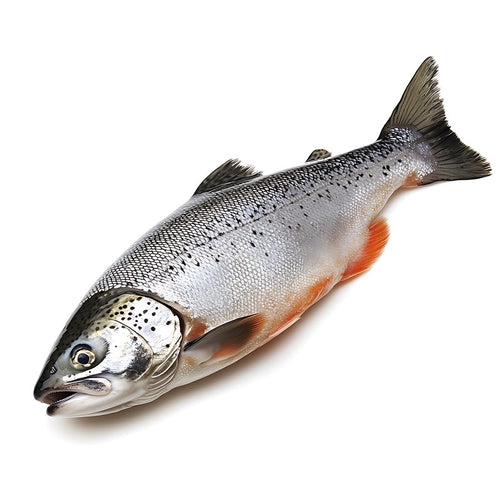Migration Patterns of Sockeye Salmon: Nature's Great Journey

Migration Patterns: Journey of Sockeye Salmon
Sockeye salmon (Oncorhynchus nerka) embark on one of the most remarkable migrations in the natural world. From their freshwater spawning grounds to the vast expanse of the North Pacific Ocean and back, their journey spans thousands of miles and is fraught with challenges. This migration is essential not only for the survival of the species but also for the health of entire ecosystems.
In this article, we’ll explore the migration routes, timing, and obstacles sockeye salmon face during their life cycle.
Discover premium sockeye salmon and sustainably sourced seafood at Global Seafoods. For more insights, visit our YouTube channel.
Introduction: The Epic Journey of Sockeye Salmon
Sockeye salmon migrations are not only a biological wonder but also a vital part of ecological balance. Spanning thousands of miles from ocean to freshwater and back, these migrations illustrate the resilience of nature.
"The journey of sockeye salmon represents one of the most extraordinary migrations in the animal kingdom," notes the Wild Salmon Center.
Explore the best sockeye salmon products, like Sockeye Salmon Fillets, at Global Seafoods.
Migration Routes: From Freshwater to Ocean and Back
Sockeye salmon are anadromous, meaning they migrate between freshwater and saltwater during their life cycle.
1. Freshwater Origins
Where It Begins
- Sockeye salmon hatch in freshwater rivers, lakes, and streams.
- Key regions include Alaska’s Copper River, Bristol Bay, and British Columbia’s Fraser River.
Initial Journey
- Juvenile salmon (fry) migrate downstream to estuaries, adapting to saltwater in preparation for their ocean phase.
Explore Related Products
2. The Ocean Phase
Once in the ocean, sockeye salmon spend 2–4 years feeding and maturing in the North Pacific.
Key Feeding Areas
- Bering Sea: Rich in plankton and krill, essential for growth and energy reserves.
- North Pacific Gyre: Provides nutrients that sustain salmon populations.
Migration During the Ocean Phase
- Sockeye salmon may travel thousands of miles during this stage, crossing international waters.
3. The Return to Freshwater
Migration to Spawning Grounds
- Mature sockeye salmon return to their natal rivers to spawn, using a combination of environmental cues and their sense of smell.
- Major runs occur in Alaska, Canada, and Russia.
Distance Traveled
- Some sockeye salmon migrate over 1,000 miles upstream, battling strong currents and natural predators.
Shop Premium Products
Timing: When Do Sockeye Salmon Migrate?
Migration timing varies by region and is influenced by environmental conditions.
1. Juvenile Migration
- Sockeye fry typically migrate downstream in spring to early summer.
- Timing aligns with optimal food availability in estuaries.
2. Adult Return Migration
- Adult sockeye salmon return to spawn between June and October, depending on the region.
- Alaska’s Bristol Bay run peaks in June and July, while BC’s Fraser River sockeye often return in August.
Related Products
Challenges Faced During Migration
Sockeye salmon encounter numerous obstacles on their journey, both natural and human-made.
1. Predators
- Freshwater: Bears, eagles, and otters prey on migrating salmon.
- Ocean: Larger fish, marine mammals, and seabirds target juvenile and adult salmon.
2. Environmental Changes
- Climate Change: Warmer water temperatures can stress salmon and reduce oxygen levels.
- Habitat Loss: Dams and urban development block migration routes and degrade spawning grounds.
3. Overfishing
- Unsustainable fishing practices can deplete populations, particularly during their concentrated spawning runs.
Conservation Spotlight
Strict fishery management, such as Alaska’s sustainability guidelines, helps mitigate these challenges and protect sockeye salmon populations.
Ecological Importance of Sockeye Salmon Migration
Sockeye salmon migrations are essential for nutrient cycling and ecosystem health.
Nutrient Transport
- Spawning salmon transport marine-derived nutrients into freshwater systems, enriching the soil and supporting plant and animal life.
Keystone Species
- Salmon migrations sustain predators, from bears to birds, highlighting their vital ecological role.
FAQs About Sockeye Salmon Migration
1. How far do sockeye salmon migrate?
Sockeye salmon can travel over 1,000 miles from the ocean to their freshwater spawning grounds.
2. How do sockeye salmon navigate back to their natal rivers?
They use environmental cues and their acute sense of smell to locate their birthplace.
3. What challenges do sockeye salmon face during migration?
Predation, climate change, habitat loss, and overfishing are the primary obstacles.
4. When do sockeye salmon migrate?
Juveniles migrate downstream in spring, while adults return to spawn between June and October.
5. Why is sockeye salmon migration important?
Their migration supports nutrient cycling and sustains ecosystems, making them a keystone species.
6. Where can I learn more about sockeye salmon?
Visit our YouTube channel for more educational content.
Conclusion: The Extraordinary Migration of Sockeye Salmon
The migration patterns of sockeye salmon exemplify nature’s resilience and interconnectedness. From their incredible journey across oceans to their vital role in sustaining ecosystems, sockeye salmon migrations are a testament to the beauty and importance of the natural world.
Shop sustainably sourced sockeye salmon at Global Seafoods. For more seafood insights, explore our YouTube channel.
Would you like further refinements or additional content? Let me know!
Also in News

How to Make Sea Bream Sushi With Dry-Aged Tuna & Crab Roll — Step-by-Step With Chef Joshua
A complete guide to making Sea Bream sushi at home, including filleting, curing, slicing, and building a Dry-Aged Tuna & Crab sushi roll. Chef Joshua shares professional tips for restaurant-quality results.

Boiled Crab for Game Night: Everything You Need for a Perfect Seafood Party
Take your game night to the next level with a Boiled crab party. Learn the best recipes, cooking tips, and hosting hacks for a memorable seafood feast.

Boiled Crab for Date Night: A Romantic Guide to the Perfect Seafood Feast
Make your next date night unforgettable with a romantic Boiled crab experience. This guide covers everything you need to know, from ambiance to the best crab varieties.
